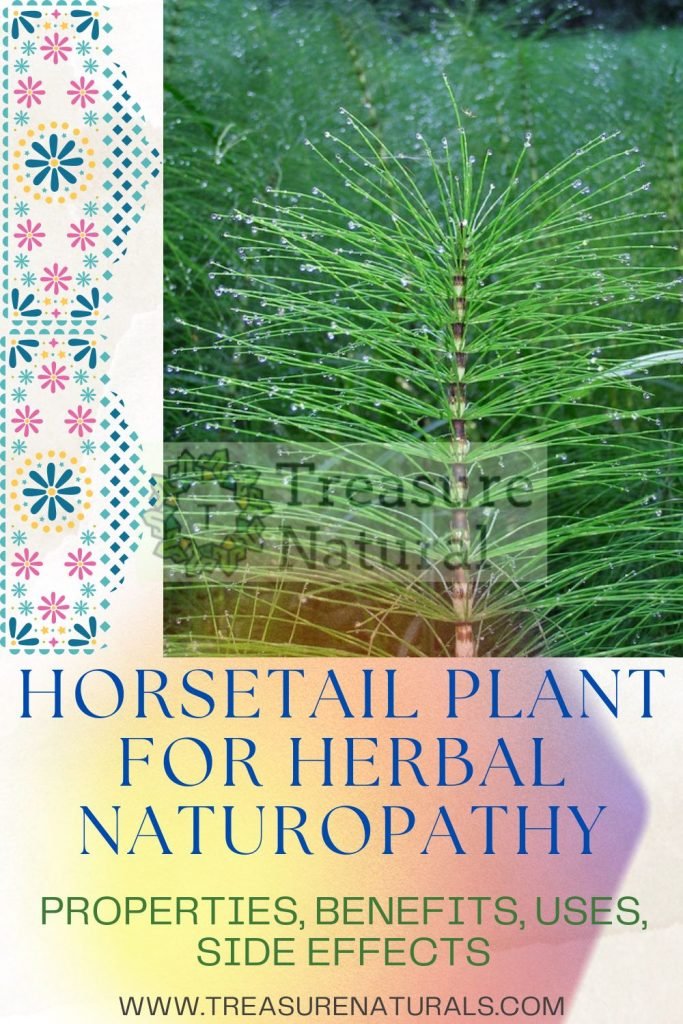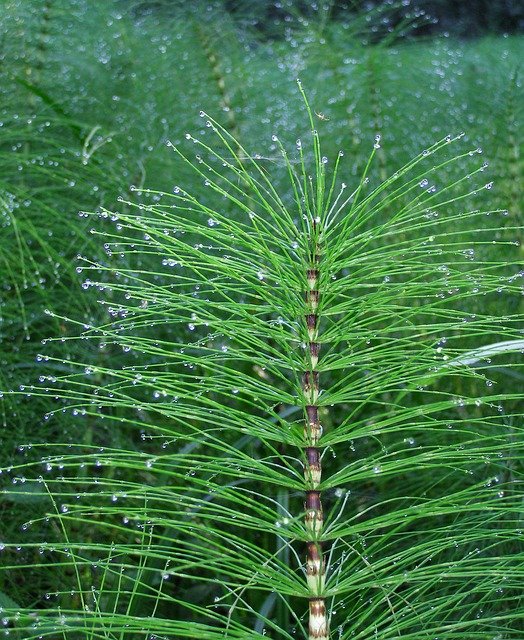
Horsetail (Equisetum arvense) is a plant of the Equisetaceae family. Known for its vasoprotective and diuretic properties, it is useful for hair, skin and nails.
Horsetail ( Equisetum arvense ) is a plant of the Equisetaceae family. Known for its capillar-protective and diuretic properties, it is useful for hair, skin and nails. Let’s find out better.
Properties of the horsetail
The active ingredients present in horsetail are: silica (10% passes as silicic acid in herbal teas), calcium , magnesium , potassium , saponin (equisetonin), flavonic glycosides, small amounts of alkaloids and tannins. Due to the presence of these mineral salts, in a molecular form highly available to our body, horsetail contributes to the “bone metabolism” and favors the remineralization of the osteo-articular system and hard tissues such as nails and hair.
Its intake is therefore indicated in case of nail fragility, hair loss, alopecia, osteoporosis, skeletal growth of adolescents, after-effects of fractures, arthrosis (thanks to the action it exerts on both joint cartilage and bone tissue) and tendonitis (improves the elasticity of the tendons).
Horsetail, or horsetail, is also a diuretic and is therefore recommended in the treatment of elimination of metabolic waste. It is also capilloprotector due to its astringent action on blood vessels, useful against capillary fragility. The healing property makes it an excellent tissue repairer and therefore is used in the cosmetic field in the preparation of products against stretch marks, wrinkles and cellulite.
How to use
INFUSION: 1 level spoon of horsetail top, 1 cup of water
Pour the plant into cold water, turn on the fire and bring to a boil. Boil for a few minutes and turn off the heat. Cover and leave to infuse for 10 min. Filter the infusion and drink it between meals to take advantage of its remineralizing and diuretic action.
Contraindications of horsetail
Horsetail intake is contraindicated during pregnancy and breastfeeding. It can interact with high blood pressure medications and diuretics.
Description of the plant
Curious fern with sterile stem (50 cm) (devoid of flowers and seeds), with green chloroplasts, striped, with verticillated stamens. The multiplication is ensured by the spores emitted by a second type of stem (20 cm), gray in color because it is free of chlorophyll, which appears at the base of the plant in spring, and is free of chloroplasts, with a strobile at the top. When the spores fall, the strobilus disappears and the fertile stem becomes similar to the sterile one.
The habitat of the horsetail
It is one of the most ancient organisms on earth, the name “arvense” denotes its presence in rural areas, and it is actually not uncommon to find it on wet uncultivated land or along ditches; but also along the slopes, ruderal environments, and sandy and clayey soils.
Background

The name equisetum properly means “horse’s tail or hair” and has been used for therapeutic purposes since Roman and Greek antiquity. Horsetail is also known as “vegetable clay” due to its mineral composition and its properties.






